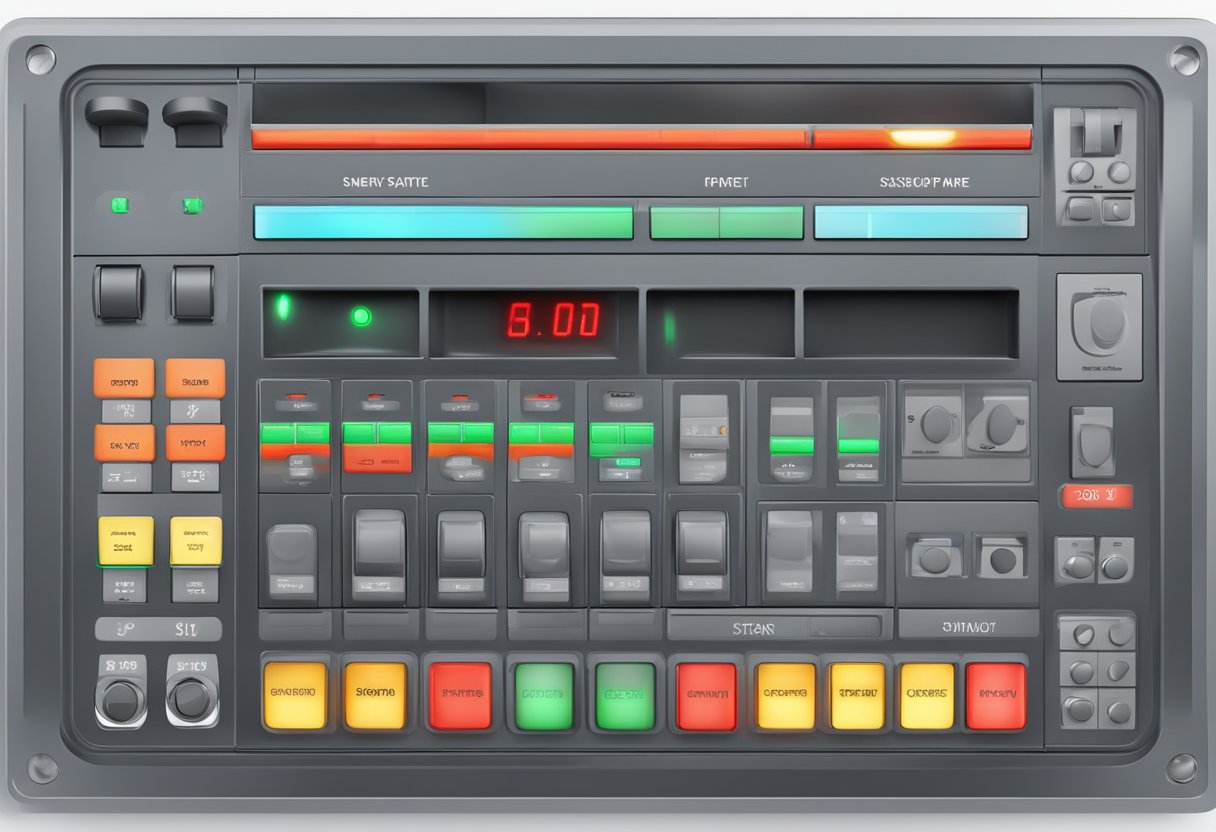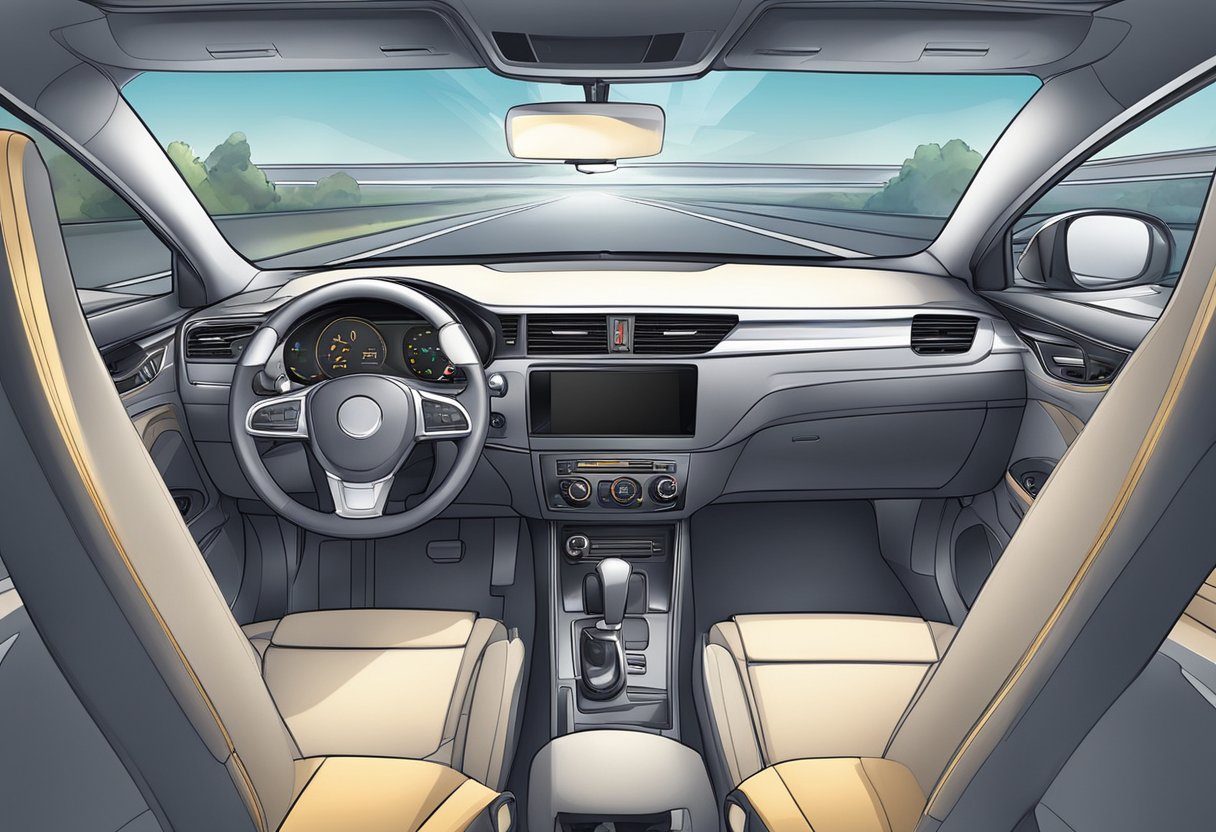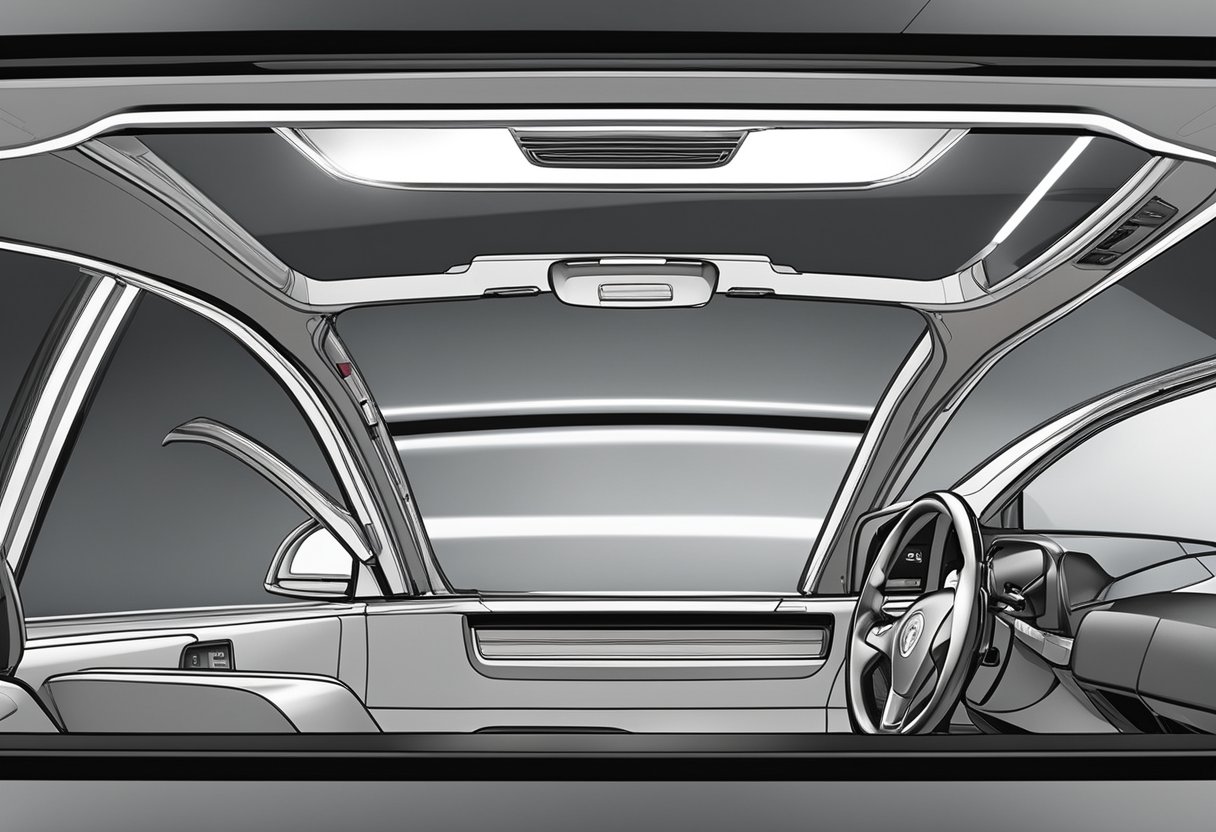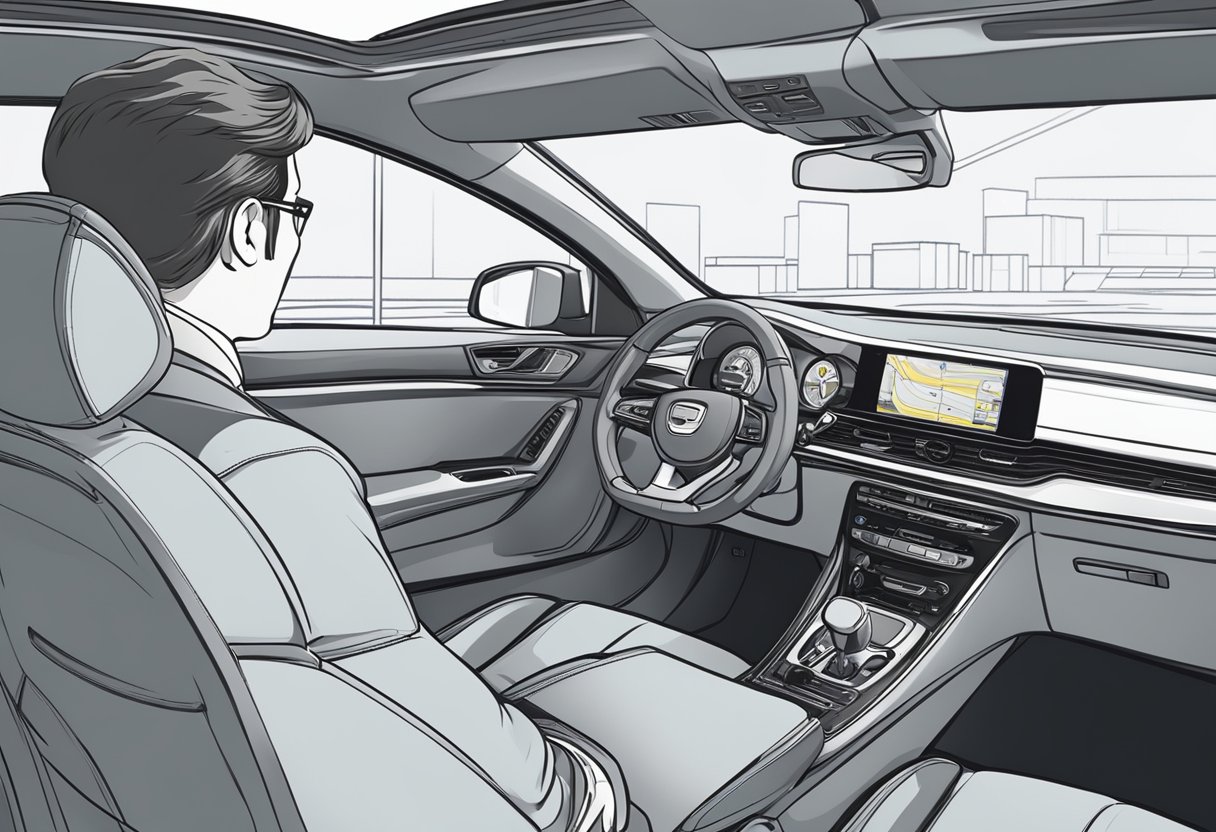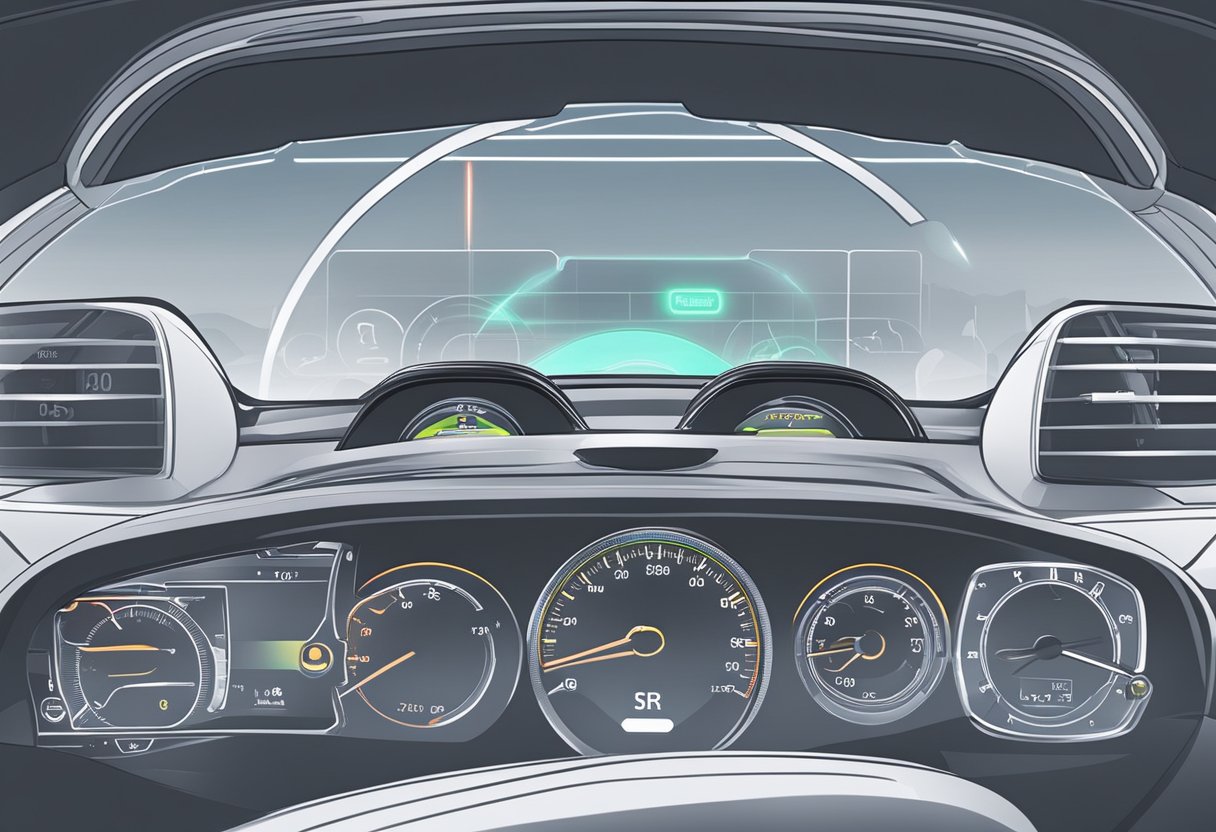If you’re driving a car and you notice the SRS light illuminated on your dashboard, you may be wondering what it means and whether it’s safe to continue driving. SRS stands for Supplemental Restraint System, and it’s an important safety feature in modern cars. In this article, we’ll explain what the SRS light means, what its safety functions are, and what you should do if you see it illuminated.
The SRS system is designed to protect you in the event of a collision. It includes airbags, seat belt tensioners, and other components that work together to minimize the risk of injury. When the SRS light is illuminated, it means that there’s a problem with the system and it may not function properly in the event of a crash. This could put you at risk of serious injury or even death, so it’s important to take the warning seriously.
What Is the SRS Light?
Definition and Function
The SRS (Supplemental Restraint System) light is a warning indicator that appears on the dashboard of your vehicle. It is designed to alert you to potential issues with your vehicle’s airbag system. The SRS light is a crucial safety feature that can help prevent serious injury or death in the event of an accident.
The SRS system is responsible for deploying the airbags in your vehicle in the event of a collision. The SRS light is designed to come on when there is a problem with the system. This could be due to a malfunctioning sensor, a damaged airbag, or a problem with the wiring.
If the SRS light comes on, it is important to have your vehicle inspected by a qualified mechanic as soon as possible. Ignoring the warning could result in the airbags failing to deploy in the event of an accident, which could lead to serious injury or death.
Components Involved
The SRS system is made up of several components, including sensors, airbags, and the control module. The sensors are designed to detect when a collision has occurred and send a signal to the control module, which then deploys the airbags.
The control module is the brain of the SRS system and is responsible for monitoring the sensors and deploying the airbags when necessary. The airbags themselves are designed to help protect you in the event of a collision by cushioning the impact and reducing the risk of injury.
If any of these components are damaged or malfunctioning, the SRS light will come on to alert you to the problem. It is important to have your vehicle inspected by a qualified mechanic to determine the cause of the issue and ensure that your airbag system is functioning properly.
Causes of SRS Light Illumination
When your SRS light is illuminated, it means that there is a problem with your vehicle’s safety restraint system. The SRS light is an important safety feature that should not be ignored. Here are some common causes of SRS light illumination:
Minor Faults
Minor faults are the most common cause of SRS light illumination. These faults are usually caused by a loose connection or a faulty sensor. If a sensor detects a fault, it will send a signal to the SRS control module, which will then illuminate the SRS light.
Major Malfunctions
Major malfunctions are less common but can be more serious. These malfunctions can be caused by a faulty airbag, a damaged control module, or a malfunctioning seatbelt tensioner. If you experience a major malfunction, it is important to have your vehicle inspected by a qualified mechanic as soon as possible.
It is important to note that SRS light illumination can also be caused by a variety of other factors, such as a dead battery or a damaged alternator. If your SRS light is illuminated, it is important to have your vehicle inspected by a qualified mechanic to determine the cause of the problem.
Safety Implications of Ignoring the SRS Light
Ignoring the SRS light on your dashboard can have serious safety implications. The SRS light is an essential safety feature that indicates a problem with the Supplemental Restraint System, which includes airbags, seat belts, and other safety components. Ignoring the SRS light can lead to immediate risks and long-term consequences.
Immediate Risks
If the SRS light is illuminated, it means that the system is not functioning properly. This can result in the airbags not deploying during an accident, which can lead to serious injuries or even death. Additionally, if the seat belt pre-tensioners are not working, you may not be properly restrained in the event of an accident, which can also lead to serious injuries.
Long-Term Consequences
Ignoring the SRS light can also have long-term consequences. If the system is not functioning properly, it may not provide the necessary protection in the event of an accident, which can result in chronic injuries or disabilities. Additionally, if the airbags or other safety components are not working, it can decrease the value of your vehicle and make it more difficult to sell or trade-in.
It is important to address any issues with the SRS system as soon as possible to ensure your safety and the safety of your passengers. Ignoring the SRS light can have serious consequences and should not be taken lightly. If the SRS light is illuminated, take your vehicle to a certified mechanic or dealership immediately to have it inspected and repaired.
Can a Loose Gas Cap Cause the SRS Light to Come On?
Yes, a loose gas cap can cause the SRS light to come on. In modern vehicles, a loose gas cap triggers the check engine light, which may, in turn, cause the SRS light to come on. It is important to ensure the gas cap is tightened properly to prevent this issue.
Diagnostic Procedures
If your SRS light is illuminated, it is important to take immediate action to diagnose the issue. There are two different diagnostic procedures that can be used to determine the cause of the illuminated SRS light: professional diagnostic tools and self-diagnostic steps.
Professional Diagnostic Tools
Professional diagnostic tools are typically used by trained mechanics at auto repair shops. These tools are designed to provide detailed information about the specific issue causing the SRS light to illuminate. Some common professional diagnostic tools include:
-
OBD-II Scanner: This scanner is used to read the diagnostic trouble codes (DTCs) stored in the vehicle’s onboard computer. These codes can provide insight into the specific issue causing the SRS light to illuminate.
-
Airbag Scan Tool: This tool is specifically designed to diagnose issues with the airbag system. It can provide detailed information about the airbag sensors, control module, and other components of the system.
If you are not familiar with these tools, it is best to take your vehicle to a trained mechanic who can use them to diagnose the issue.
Self-Diagnostic Steps
If you prefer to diagnose the issue yourself, there are a few steps you can take to determine the cause of the illuminated SRS light. Some common self-diagnostic steps include:
-
Check the Seat Belts: Ensure that all seat belts are properly fastened and that there are no obstructions preventing them from retracting properly.
-
Check the Airbag Sensors: Look for any damage to the airbag sensors, such as cracks or dents. If you notice any damage, it is best to take your vehicle to a trained mechanic for further diagnosis.
-
Check the Airbag Control Module: The airbag control module is responsible for monitoring the airbag system and triggering the airbags in the event of a collision. If the module is faulty, it may be causing the SRS light to illuminate.
It is important to note that self-diagnostic steps may not provide as much detail as professional diagnostic tools. If you are unable to determine the cause of the illuminated SRS light using these steps, it is best to take your vehicle to a trained mechanic for further diagnosis.
Solutions and Preventative Measures
Common Repairs
If your SRS light is illuminated, it is essential to address the issue immediately to ensure the safety of yourself and your passengers. Here are some common repairs that can be done to fix the issue:
- Check the seat belt wiring and connections: Ensure that the seat belt wiring and connections are clean and secure. Loose or corroded connections can cause the SRS light to illuminate.
- Replace the seat belt buckle: If the seat belt buckle is damaged or faulty, it can cause the SRS light to illuminate. Replace the buckle to solve the problem.
- Replace the airbag module: If the airbag module is damaged, it can cause the SRS light to illuminate. Replacing the module is the only solution in this case.
Maintenance Tips
Preventative maintenance is key to avoiding SRS light issues. Here are some tips to keep your SRS system functioning correctly:
- Keep your car clean: Dirt and grime can accumulate in the seat belt connections and cause the SRS light to illuminate. Regular cleaning can prevent this issue.
- Check the battery: A weak battery can cause the SRS light to illuminate. Regularly check your battery’s voltage to ensure that it is functioning correctly.
- Regularly check the SRS system: It is recommended to have your SRS system checked by a professional mechanic every two years. This can help identify any potential issues before they become a problem.
By following these solutions and preventative measures, you can ensure that your SRS system is functioning correctly and that you and your passengers are safe on the road.
As an Amazon Associate we earn from qualifying purchases.








